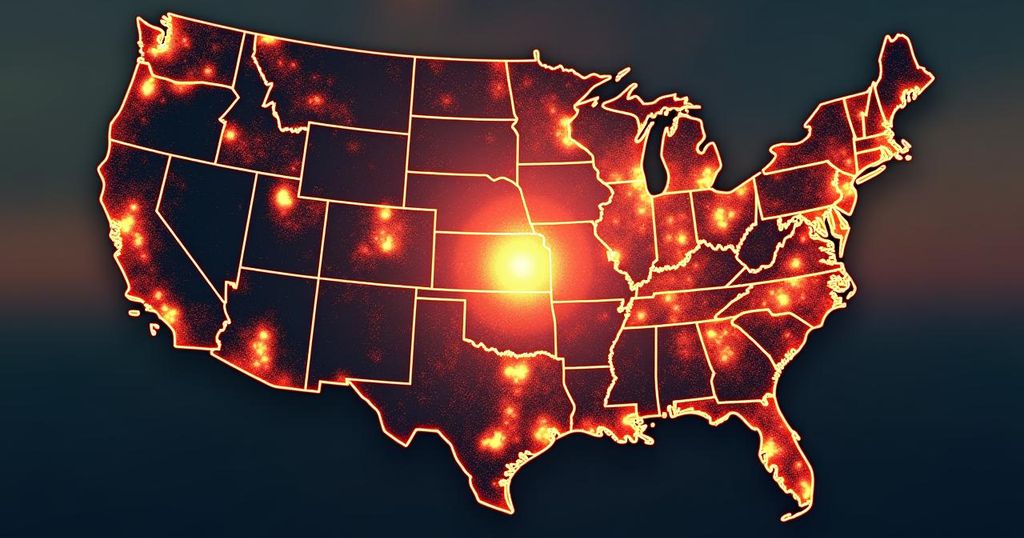A 4.1-magnitude earthquake was reported in Montana on October 7, marking a notable seismic event following several others in the United States, including recent quakes in California, Tennessee, Oregon, and Idaho. This series of earthquakes points to an increase in geological activity in September and October across various regions.
On October 7, a 4.1-magnitude earthquake struck Montana, with its epicenter located in Dillon at a depth of 13.7 kilometers (approximately 8.5 miles), as reported by the United States Geological Survey (USGS). This seismic event prompted 120 public reports indicating that residents felt the quake at the time of publication. This incident followed closely on the heels of a 3.7-magnitude earthquake that occurred in California on October 5, centered in Petrolia at a depth of 10.0 kilometers (about 6.2 miles). Prior to that, a 2.5-magnitude tremor was recorded in Tennessee on October 3, with its focus at a depth of 9.7 kilometers (approximately six miles). Further, the Tennessee earthquake ensued the day after a 3.5-magnitude earthquake struck the Oregon coast on October 2, which was centered at a depth of 13.5 kilometers (about 8.4 miles). This coastal quake, in turn, was reported shortly after another 3.5-magnitude earthquake in California, which transpired on October 1, centered in Avenal at a depth of 11.4 kilometers (about seven miles). In addition, a previous 3.5-magnitude earthquake had been reported in Ontario, California, at a shallower depth of 4.1 kilometers (about three miles). Backtracking to September 30, Idaho recorded a 2.7-magnitude earthquake centered in Bonners Ferry at a depth of 9.1 kilometers (approximately 5.7 miles). This quake followed a notable 6.3-magnitude earthquake that affected the island nation of Mauritius on September 26, at a depth of 10.0 kilometers (about six miles). Additionally, a 4.0-magnitude earthquake also occurred in Canada on the same day, centered in Saanichton at a depth of 52.0 kilometers (about 32 miles). These seismic events are part of a series of earthquakes which included reports from Romania of a 5.2-magnitude quake centered in Cașoca at a significant depth of 133.5 kilometers (about 83 miles) on September 16. That day also saw a 5.1-magnitude earthquake reported in Texas, located in Ackerly at a depth of 8.2 kilometers (about 5.1 miles). This Texas earthquake was reported a day after a 3.4-magnitude earthquake occurred in Kansas on September 19, with its epicenter in Danville at a depth of 4.9 kilometers (about three miles). Lastly, a 6.3-magnitude earthquake was noted in the Northern Mariana Islands on September 16, centered in Saipan at a depth of 42.9 kilometers (approximately 26.7 miles). This particular seismic activity followed a 3.4-magnitude earthquake that occurred in Malibu, California, on September 13, which was centered at a depth of 10.6 kilometers (approximately 6.6 miles).
The article details a series of recent seismic events across various states in the United States and other countries, focusing on characteristics such as magnitude, depth, and location of each earthquake. The United States Geological Survey (USGS) serves as the authoritative source for the information regarding these seismic activities, which have raised public concern regarding earthquake preparedness and safety across different regions. Recent earthquakes in Montana, California, Tennessee, Oregon, Idaho, Mauritius, and other locations are part of a larger trend of geological activity.
In conclusion, the recent surge of earthquakes, particularly the notable 4.1-magnitude event in Montana, highlights the ongoing seismic activity across the globe. With a pattern of notable quakes occurring in short succession—from the coasts of California to the depths of Tennessee and internationally—it underscores the essential need for heightened awareness and preparedness regarding earthquake risks.
Original Source: www.iheart.com






